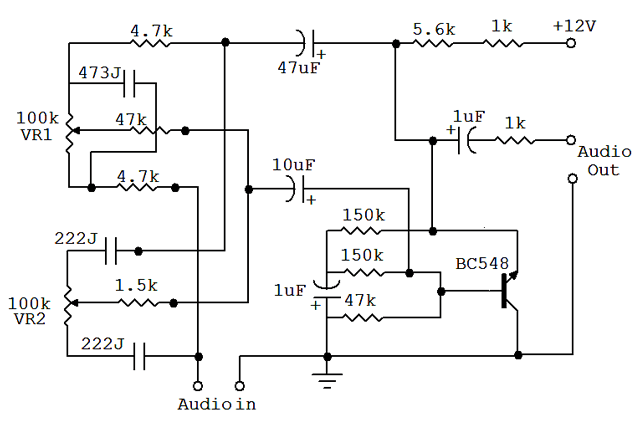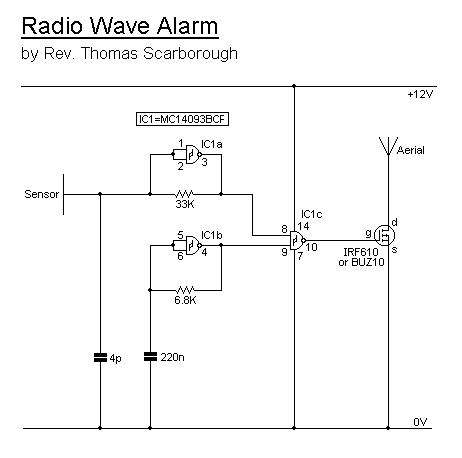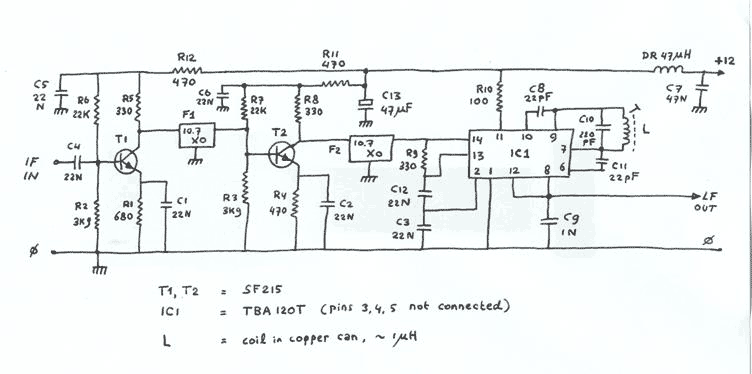
A Cmos 4060 Burglar Alarm circuit

This is a single-zone alarm system featuring automatic exit, entry, and siren cut-off timers. It is designed to accommodate various types of normally-closed input devices, including magnetic reed contacts, foil tape, and passive infrared sensors (PIRs). Additionally, it is straightforward to incorporate a normally-open trigger. Upon activation, the siren will sound for a predetermined duration before automatically shutting off and remaining inactive thereafter. The alarm system will not reactivate once silenced. The circuit serves as an excellent introduction to the CMOS 4060 and the silicon-controlled rectifier (SCR).
The single-zone alarm circuit primarily utilizes a CMOS 4060 timer IC, which provides the necessary timing functions for exit, entry, and siren cut-off operations. The CMOS 4060 is known for its low power consumption and versatility in timing applications. It features an integrated oscillator that can be configured to set the desired timing intervals for the alarm's operation.
The circuit is designed to accept normally-closed input devices, which means that when these devices are in their default state (closed), they allow current to flow. If any of these devices are triggered (opened), it activates the alarm. Commonly used input devices include magnetic reed switches, which are often used in door and window sensors, foil tape that can detect tampering, and passive infrared sensors that sense motion.
In addition to these input devices, the alarm system also provides the flexibility to incorporate normally-open triggers. These triggers can be used in scenarios where a momentary switch or other devices may be utilized to activate the alarm system temporarily.
The siren output is controlled through an SCR, which acts as a switch that can handle high current loads required to drive the siren. When the alarm is activated, the CMOS 4060 generates a pulse that turns on the SCR, allowing current to flow to the siren. The duration of the siren's sound is determined by the timing configuration of the CMOS 4060. Once the timer elapses, the SCR is turned off, cutting power to the siren and preventing any reactivation until the system is reset.
The overall design ensures that the alarm system is user-friendly, with clear timing functions and reliable operation. This circuit serves as an educational tool for understanding basic alarm system principles and the functionality of key components such as the CMOS 4060 and SCR in practical applications.This is a single zone alarm - with automatic exit, entry and siren cut-off timers. It will accommodate all the usual types of normally-closed input devices - such as magnetic reed contacts, foil tape, PIRs etc. But it`s easy to add a normally-open trigger. When the alarm is activated - the siren will sound for a fixed length of time. Then it will switch off - and remain off. The alarm will not reactivate. The Circuit offers a good introduction to the Cmos 4060 and the SCR.. 🔗 External reference
The single-zone alarm circuit primarily utilizes a CMOS 4060 timer IC, which provides the necessary timing functions for exit, entry, and siren cut-off operations. The CMOS 4060 is known for its low power consumption and versatility in timing applications. It features an integrated oscillator that can be configured to set the desired timing intervals for the alarm's operation.
The circuit is designed to accept normally-closed input devices, which means that when these devices are in their default state (closed), they allow current to flow. If any of these devices are triggered (opened), it activates the alarm. Commonly used input devices include magnetic reed switches, which are often used in door and window sensors, foil tape that can detect tampering, and passive infrared sensors that sense motion.
In addition to these input devices, the alarm system also provides the flexibility to incorporate normally-open triggers. These triggers can be used in scenarios where a momentary switch or other devices may be utilized to activate the alarm system temporarily.
The siren output is controlled through an SCR, which acts as a switch that can handle high current loads required to drive the siren. When the alarm is activated, the CMOS 4060 generates a pulse that turns on the SCR, allowing current to flow to the siren. The duration of the siren's sound is determined by the timing configuration of the CMOS 4060. Once the timer elapses, the SCR is turned off, cutting power to the siren and preventing any reactivation until the system is reset.
The overall design ensures that the alarm system is user-friendly, with clear timing functions and reliable operation. This circuit serves as an educational tool for understanding basic alarm system principles and the functionality of key components such as the CMOS 4060 and SCR in practical applications.This is a single zone alarm - with automatic exit, entry and siren cut-off timers. It will accommodate all the usual types of normally-closed input devices - such as magnetic reed contacts, foil tape, PIRs etc. But it`s easy to add a normally-open trigger. When the alarm is activated - the siren will sound for a fixed length of time. Then it will switch off - and remain off. The alarm will not reactivate. The Circuit offers a good introduction to the Cmos 4060 and the SCR.. 🔗 External reference





